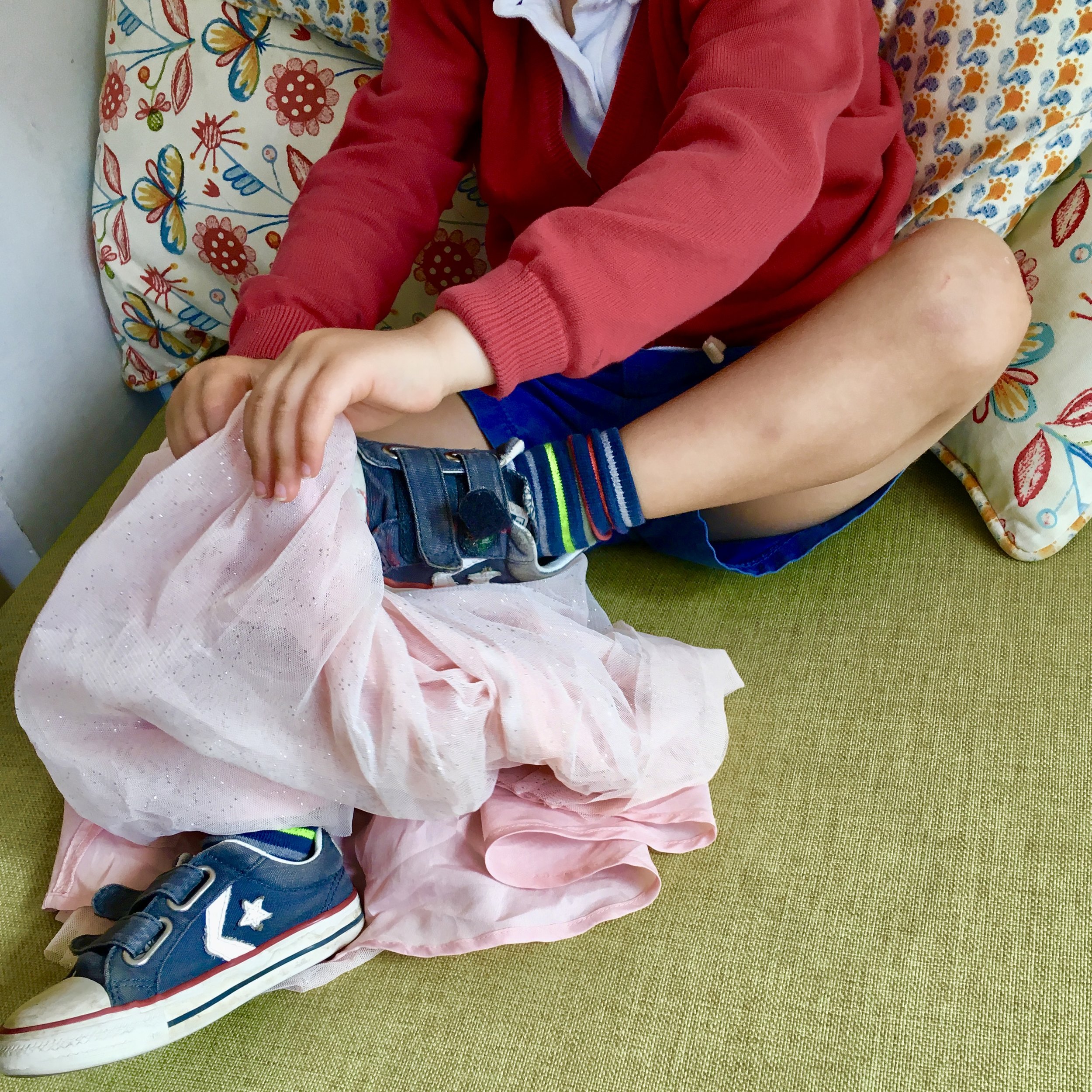The Boy In The Dress… or the skirt… or the hot pink sandals
Maybe your son is a devoted fan of Elsa in Frozen. Maybe he loved David Walliams’ The Boy In The Dress. Or maybe he just thinks a big skirt and swishy fabric is more fun than another T-shirt and jeans combo (I’d agree). But as parents, we know that boys acting 'girly' can meet with derision. So how should we respond if our son wants to go out wearing 'girls' clothes? Charlotte Heathcote asked a psychologist for advice…
My son’s favourite colour is pink and he was four the first time a girl, also four, told him he wasn’t allowed to wear pink 'because it’s for girls'. The gender restrictions were kicking in earlier than I expected. On another occasion a classmate was disgusted to find him wearing the same girls’ trousers as her (she was right, they were girls’ trousers. I bought them in Next. But they were blue. And blue is for boys, right…?)
This year, when it came to buying him a pair of summer sandals, I quaked when he chose a pair in hot pink and orange. Deep down, under my liberal 21st-century façade, was I no different to Lewis Hamilton shrieking: 'Boys don’t wear princess dresses!' at his bewildered little nephew?
Well, no. Firstly, I bought the sandals without comment. And unlike Hamilton, I didn’t shame my son for his choice because I don’t think it’s demeaning for a boy to adopt traditionally female habits or hobbies. But it also made me think. Naturally I want to protect my son from the kind of criticism that might upset him or knock his confidence.
"Naturally I want to protect my son from the kind of criticism that might upset him or knock his confidence."
So should we warn our sons that they might attract unwanted attention, unkind words, or even bullying, for breaking the dress code? I asked consultant clinical psychologist Janice Hiller for advice.
'Protect and prepare is absolutely crucial,' said Hiller. 'Talk to your son and say, "Some people don’t understand. They think boys and girls should wear completely separate clothes. So you might get teased. People might make fun of you." Your son needs to think, "This is right for me. This is what I want to do. This is how I feel and it’s OK."'
And how can we help boys respond to any criticism that might come their way? Hiller explains:
'A child might say, "Why are you wearing a dress?" You want your son to think about what’s happening with the other child: they’re not used to it. When they’re older, they’ll realise. And they don’t know what’s going on in your son’s mind.’
"What’s the difference? I’m the same person whatever I wear."
So she suggests they reply by saying: 'Don’t keep saying that. I’m comfortable like this. You can wear trousers if you want to. I can wear a dress. What’s the difference? I’m the same person whatever I wear.'
At what age could parents start trying to have this conversation? Far earlier than I had assumed. 'I think it’s a good thing to start early on, right from when they’re two or three years old,' suggests Hiller. 'If you start explaining then it helps them to manage their own emotions.'
Hiller’s advice is really about allowing kids to be themselves, whoever they want to be. After all, it’s adults who made up the rules about who is supposed to wear what. So let your sons raid the dressing up box for flouncy dresses, hot pink sandals or whatever takes their fancy. And let’s give our kids the tools to tell everyone else that that’s just fine.

